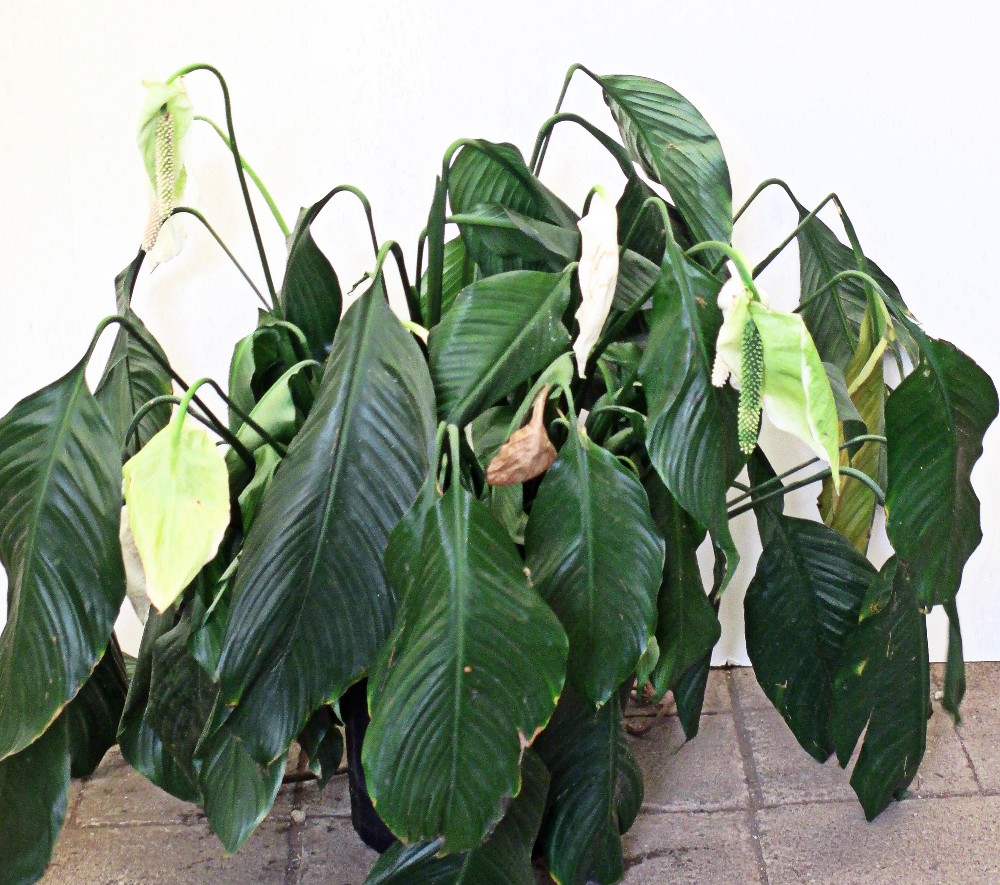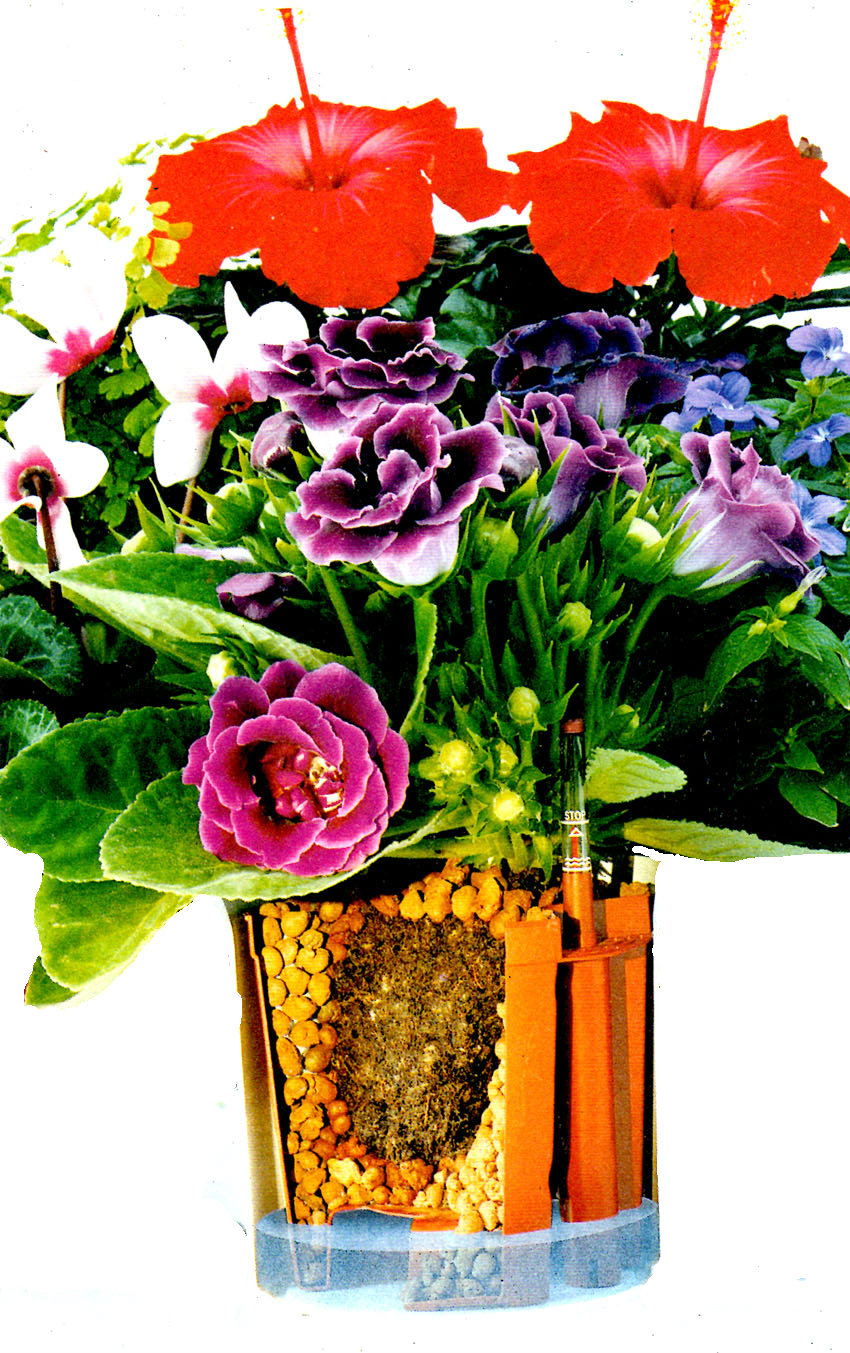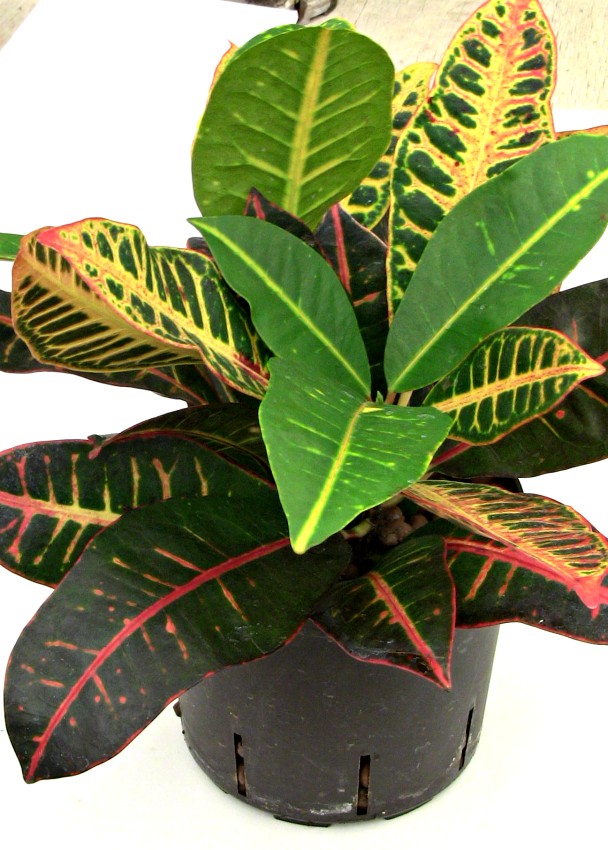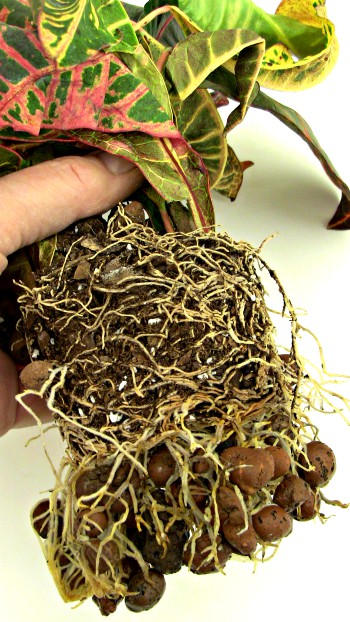"Terraponics" for Houseplants
Most plants transition from soil to hydroponics without incident. But for some . . . well, it's not so easy.

Why?
Converting soil plants to hydroponics requires removing all the soil from the plant's roots and forcing the plant to convert to water (hydroponic) roots. This can be a challenge for some plants.
Plants that struggle with the transition to hydroponics include:
|
Unfortunately, many of these plants never completely recover from the shock of transplanting.
No worries - we have a solution!
It's called "terraponics".
What is Terraponics?
"Terra" means soil. With "terraponics", plants are transferred to a hydroponic system without removing the soil from their roots.
 Terraponic setup showing the soil root ball positioned in a bed of LECA pebbles.
Terraponic setup showing the soil root ball positioned in a bed of LECA pebbles.Originally designed in Europe for outdoor planters, terraponics is becoming increasingly popular with many indoor plants.
With terraponic growing, the entire root ball (soil included) is packed into a bed of hydroponic pebbles, leaving the plant’s roots undisturbed.
This eliminates the stress many plants experience when soil is removed from their roots.
Notice how LECA pebbles surround the root ball on all sides in the illustration on the right. These pebbles wick moisture up to the plant's root ball from the reservoir at the bottom of the planter while new (stronger) water roots grow out into the pebbles.
Eventually these new water roots replace the old soil roots - and then your plant will start enjoying all advantages of hydroponic growing!
 Typical houseplant (croton) growing with the terraponics method. Typical houseplant (croton) growing with the terraponics method. |
 A close look at the roots after growing in terraponics for several months. Notice how new roots grew into the pebbles. This plant is now growing as a hydroponic plant. A close look at the roots after growing in terraponics for several months. Notice how new roots grew into the pebbles. This plant is now growing as a hydroponic plant. |
The key to successful growing with terraponics drying out the soil root ball buried in the center of the grow pot. If the soil is kept wet it will contaminate the reservoir and the plant will suffer.
It is imperative that the soil root ball dries out between waterings.
Grower Tip: Just like hydroponics, terraponic plants should dry out in 2-3 weeks. If there's still water in the reservoir after 2-3 weeks - or the plant feels heavy - dump out any remaining water and force a dry period of several days before rewatering.
Then rewater, applying a less than before. Watering to only 1/4 on the gauge is common for many plants growing in terraponics.

